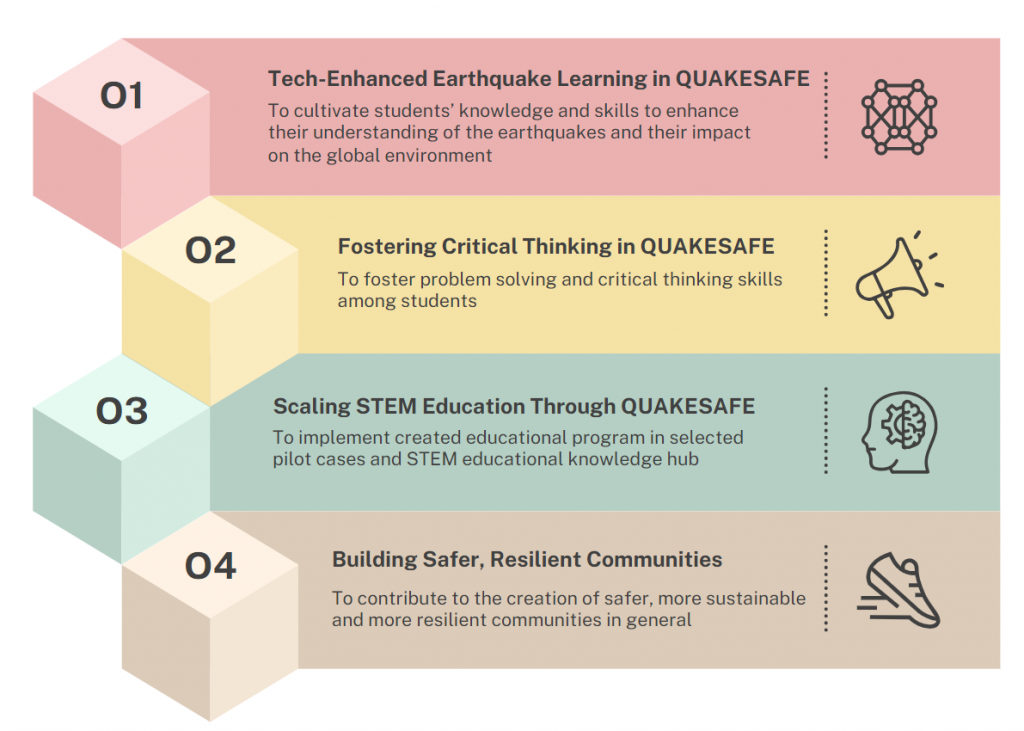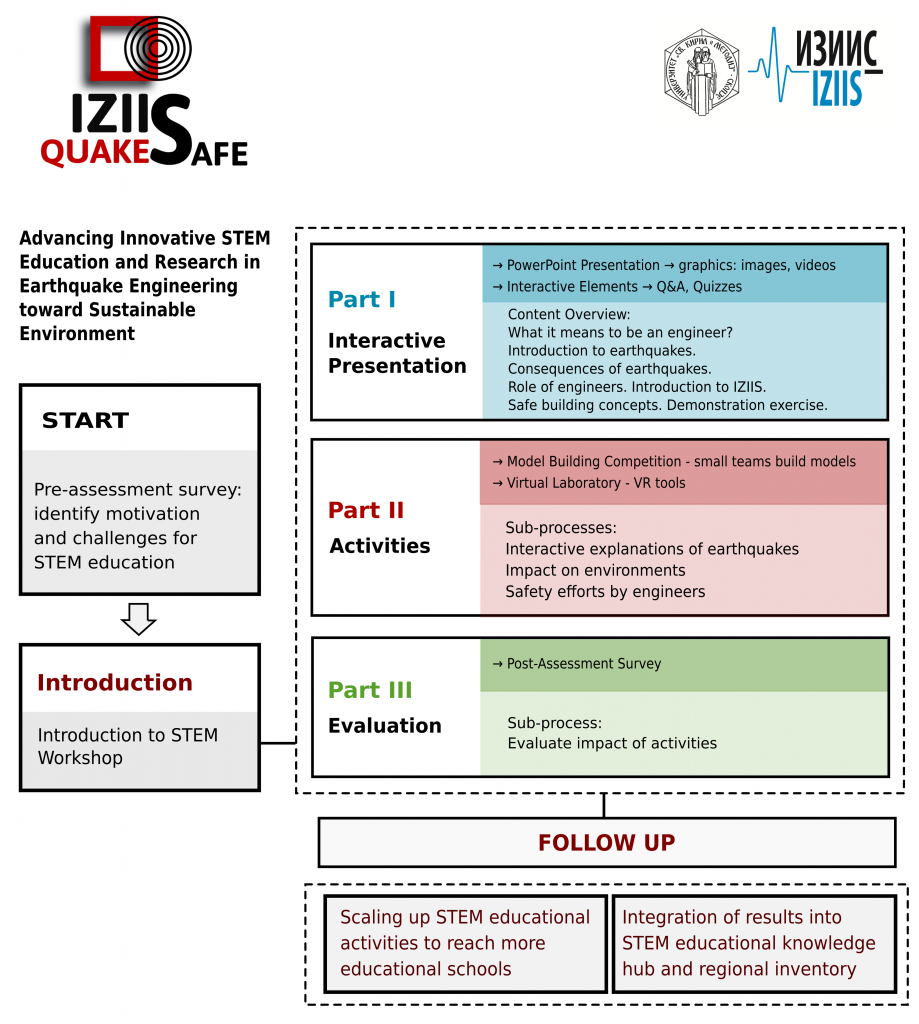With the support of

Funded by
![]()
Advancing Innovative STEM Education and Research in Earthquake Engineering toward Sustainable Environment: QUAKESAFE
Start date: 29/08/2024

End date: 20/02/2025
This project is funded within the framework of the UNESCO and Huawei
collaboration, “Revitalizing STEM education to equip next generations with STEM competency”
The main project activities include:
- Develop curriculum and educational materials, including VR simulation and online applications.
- Plan and conduct pilot sessions of STEM workshops and hands-on experiments.
- Evaluate the impact of QUAKESAFE educational activities based on pre-and post-assessment surveys.
- Scale up STEM educational activities to reach more educational schools and integrate results into STEM educational knowledge hub and regional inventory.

Overview
QUAKESAFE is designed to provide students with innovative STEM education and research activities focused on earthquake engineering toward safe and sustainable environment. In response to the pressing need for proactive measures in earthquake-prone regions (including most of South-East Europe and Mediterranean), this project seeks to equip students with essential knowledge and skills to enhance their understanding of the earthquakes and their impact on the global environment. Through a series of dynamic and engaging educational and research activities, including interactive workshops, hands-on experiments, online applications, and virtual reality (VR) simulations, in the inquiry-based and problem-solving learning environment, students will learn about the basic principles of seismic science and engineering and developed their critical thinking based on scientific facts. Moreover, the project leverages technology-enhanced learning tools and virtual reality experiences to provide students with practical insights of understanding of such complex engineering phenomena. By fostering a deeper understanding of earthquake engineering and promoting critical thinking about safe and sustainable environment, QUAKESAFE strives to empower students, enabling them to take proactive roles as agents of change within their communities.
Objectives
QUAKESAFE has four main objectives:

Expected results
- Increased understanding of engineering knowledge: Enhanced awareness of earthquakes as natural phenomena and understanding concepts of earthquake engineering and safety of environment among students, measured by pre- and post-assessment surveys assessing knowledge levels and attitudes towards seismic risks.
- Improved STEM Competency: QUAKESAFE is fostering problem-solving and critical thinking skills among students, empowering them to understand basic engineering concepts of earthquakes and their impacts on environment and become proactive citizens of change within their communities. This entails applying critical thinking and analytical skills to identify, analyse, and solve engineering and mathematical problems using logical reasoning and evidence-based approaches, thereby enabling students to address real-world challenges effectively and contribute to the creation of safer and more resilient environment.
The educational program follows the concept of the "inverted classroom method" and is generally divided into three parts: an interactive presentation in the first part, building small models as part of a demonstration exercise/competition, and a virtual laboratory (using VR glasses) in the second part, followed by a post-assessment survey to evaluate the impact of the activities in the third part.

Through strategic partnerships with educational institutions and local authorities, the designed innovative educational and research activities will be implemented in six selected high/elementary schools in our country as pilot case studies. The digital format of the activities will be easily integrated into the STEM educational knowledge hub planned as a follow-up to the outcome 1 of the call.
Elementary schools:
- Gjorgjija Pulevski, Skope, ООУ ЃОРЃИЈА ПУЛЕВСКИ (ougpulevski-aerodrom.edu.mk)
- Krste Misirkov, Gevgelija - Крсте Мисирков (krstemisirkovgvg.edu.mk)
High schools:
- Rade Jovcevski Korcagin, Skopje, СУГС Раде Јовчевски - Корчагин - РЈК (rjk.edu.mk)
- Vlado Tasevski, Skopje, СУГС „Владо Тасевски“ - Скопје (sugsvladotasevski.edu.mk)
- Josif Josivovski, Gevgelija, СОУ „Јосиф Јосифовски“ – Гевгелија (josifjosifovski.edu.mk)
- Josip Broz Tito, СОУ „Јосип Броз-Тито“ – Битола (gimnazija-jbt-bitola.edu.mk)
